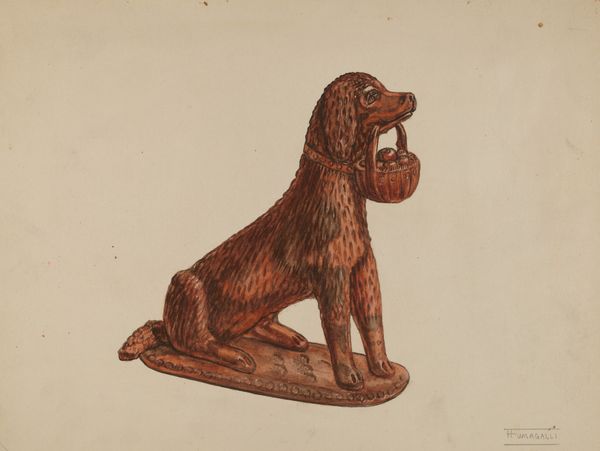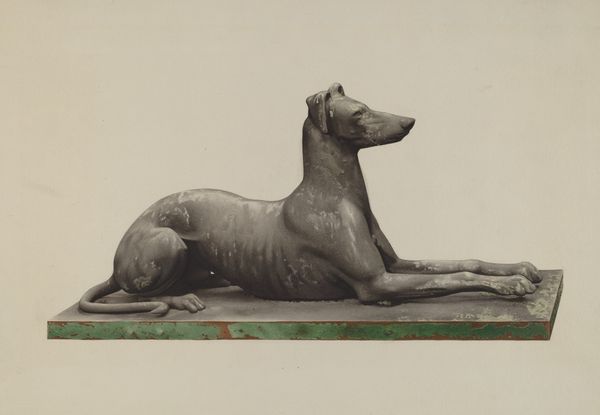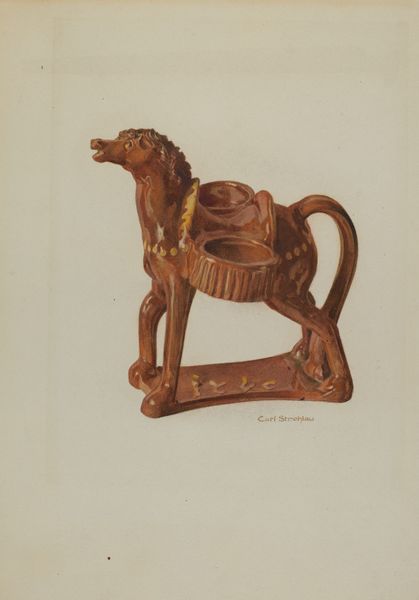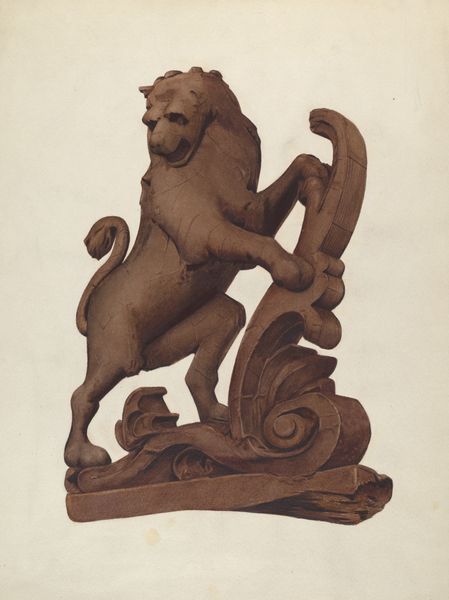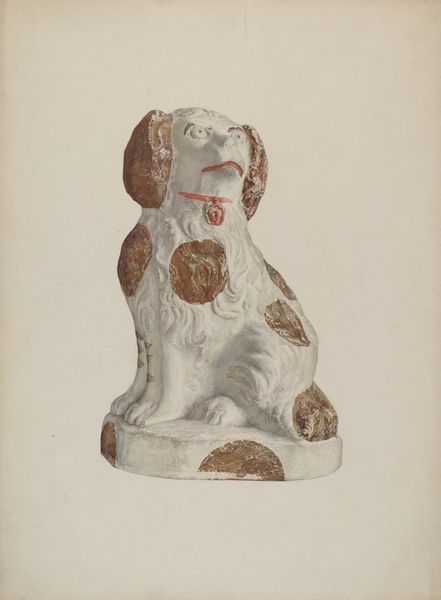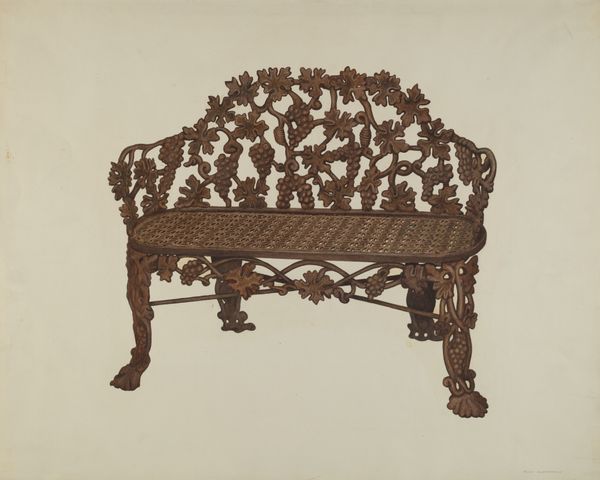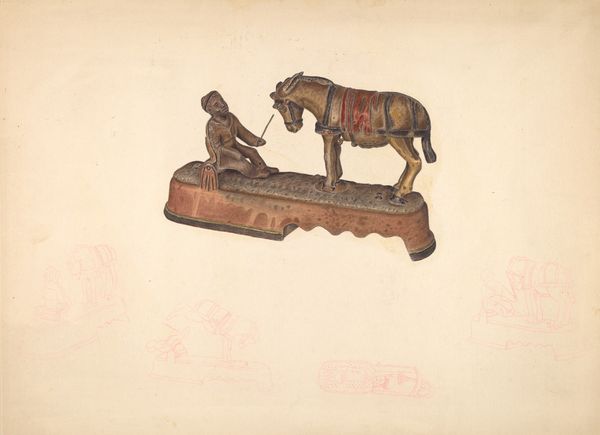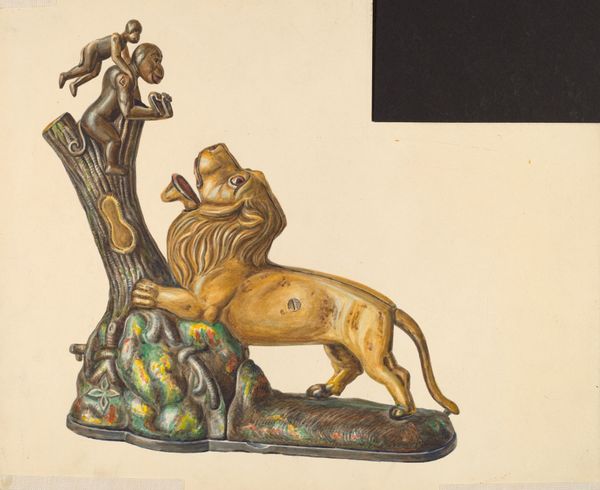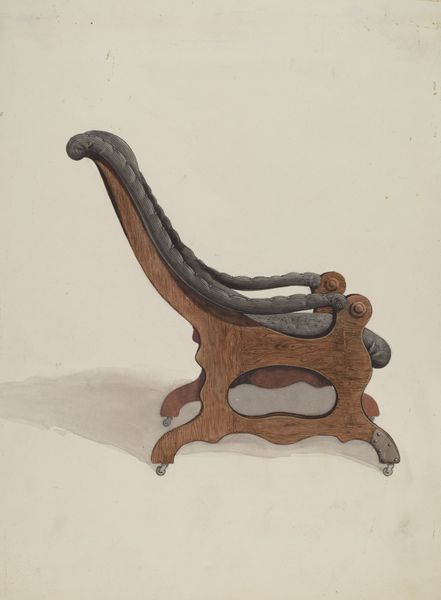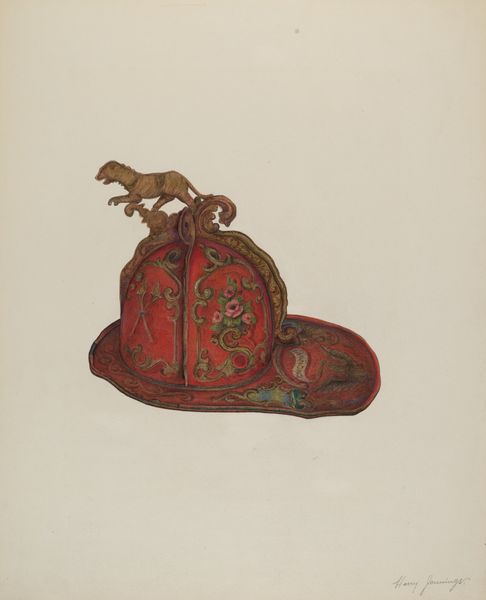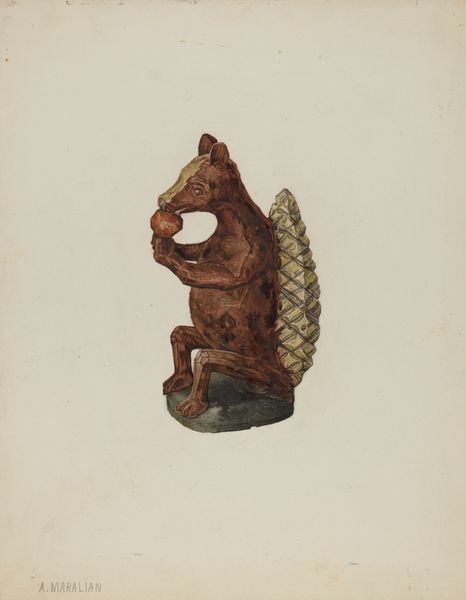
drawing, watercolor, pencil
#
drawing
#
charcoal drawing
#
watercolor
#
pencil drawing
#
pencil
#
watercolor
#
realism
Dimensions: overall: 21.9 x 29.2 cm (8 5/8 x 11 1/2 in.) Original IAD Object: 6 1/2" high; base: 6 5/8" long; 2 3/4" wide
Copyright: National Gallery of Art: CC0 1.0
Curator: What strikes me first is its peculiar blend of vulnerability and strength. It evokes both a desire to protect and a sense of inherent resilience. Editor: Yes, that duality is quite compelling. We're looking at Frank Fumagalli’s "Dog Statuette" from around 1940, rendered with pencil, watercolor, and charcoal. There’s an undeniable visual tension, a dialogue of sorts, between its realism and the surreal impression the fur creates. Curator: Absolutely. The fur, so meticulously depicted with what looks like individual strokes, suggests a kind of societal anxiety projected onto the domestic sphere. Dogs, especially during this era, became symbolic stand-ins for national identity, loyalty, and even anxieties about cultural purity. Does this "statuette," however humble in medium, also invite us to reflect on gender roles of the era, through, say, comparison to effigies of mother and child? Editor: An intriguing reading! I’m drawn to the technical accomplishment here, particularly how Fumagalli coaxes dimension from these media. Consider the rendering of light on the legs, for example, or the interplay between texture and the smooth planes that define the base. I'm wondering if it is intended as a sculpture drawing? The way he captured the light is magnificent and invites many questions. Curator: Well, such "mastery," or facility of reproduction should raise questions about visibility: who is able to represent and who gets represented. While visually impressive, its engagement with "realism," to echo your comment, may reiterate societal hierarchies between artists and subject. How can a seemingly harmless image reinforce exclusion in the visual regime? Editor: A valid point to reflect upon, considering it's a 20th-century piece, created perhaps on the precipice of shifts in thought. However, isn't the very choice of subject – a domesticated animal – a challenge to conventional hierarchies in art? Doesn't the interplay between light and shadow serve a purely formal purpose, drawing the eye across the artwork and highlighting its carefully considered composition? Curator: That could be, or perhaps the subject is just another token animal companion in this period, further reinforcing class and domesticity stereotypes. I think looking at the subject position the statuette is standing in also speaks to that larger cultural understanding. Editor: Perhaps the dialogue between our perspectives here mirrors some of those ambiguities within the artwork itself. Curator: Hopefully the visitor takes our perspectives here today as inspiration for continuing these reflections.
Comments
No comments
Be the first to comment and join the conversation on the ultimate creative platform.

